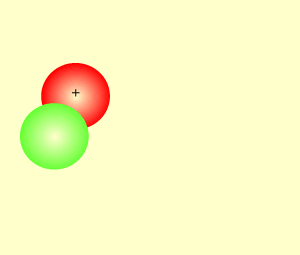The nuclear force holding the nucleons together is strong but not strong enough to hold two protons, that want to repel each other, together. But when neutrons are present the attractive nuclear force is increased relative to the repulsive electrostatic force and the nucleus is held together. Neutrons therefore, work to overcome the repulsive force of the protons and tightly bind the nucleons in the nucleus.
As the number of protons in the nucleus increase so does the number of neutrons needed to hold them together. In small atoms, about the same number of neutrons as protons are needed. However, as the atom gets bigger more neutrons than protons are needed to keep the protons together. The most common form of silver has 47 protons and 61 neutrons while lead has 82 protons and 126 neutrons. Not even the addition of extra neutrons can stabilise nuclei that have more than 83 protons.
Many strange occurrences take place in the nucleus of an atom. Unstable nuclei can become more stable by undergoing radioactive decay. These atoms that undergo radioactive decay spontaneously to produce products that have a combined mass which is less than the original atom.
Elements heavier
than bismuth can decay in one of three ways. The nucleus can decay by
emitting:
- an alpha particle, which is a particle made up of two neutrons and two
protons;
- a beta particle, which is an electron;
- gamma rays, which are high
frequency electromagnetic radiation (photons).
Electrons can be ejected from the nucleus of an atom during decay. A neutron can decay to form a proton by emitting an electron, as shown on the right. This process of neutron decay is not instantaneous and while neutrons may be stable inside an atomic nucleus,out of 100 free neutrons 50 will decay in just over ten to fifteen minutes. That is to say that free neutrons have a half life of ten to fifteen minutes.
But note, this is not to say that electrons are buried inside the nucleus of an atom or even inside a neutron. An electron does not exist inside a neutron of a nucleus any more than a bruise exists under the skin about to be hit by a cricket ball. The electron that is ejected from the neutron, like the bruise that develops after the impact, is produced during an interaction.
